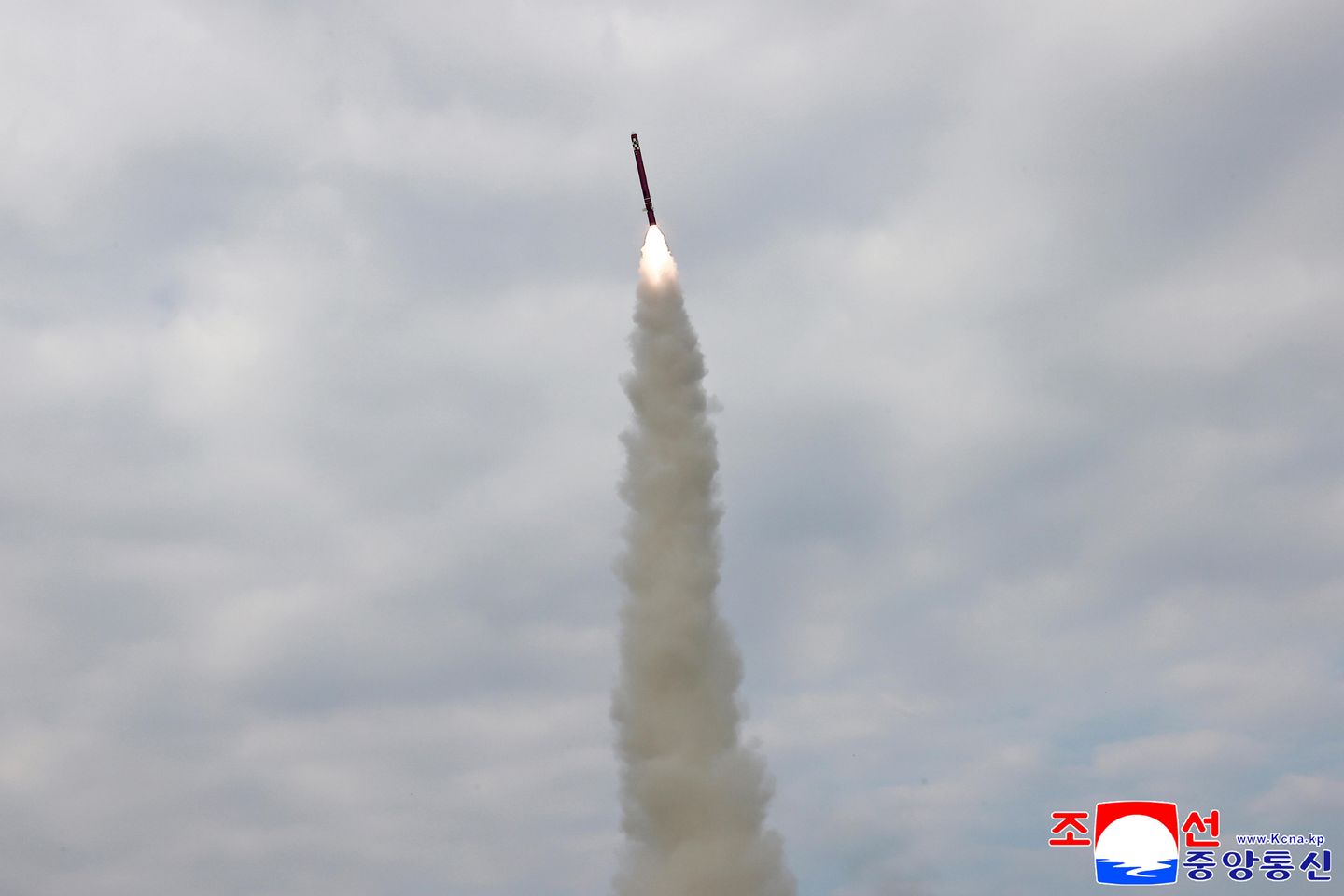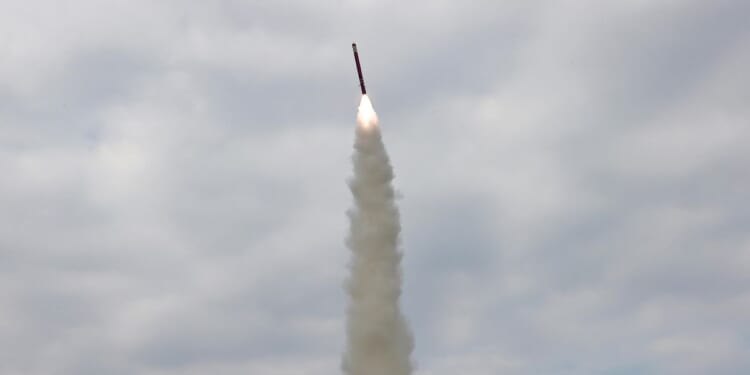
U.S. intelligence agencies are casting doubt on North Korea’s recent assertions of building ultra high-speed maneuvering missiles, a senior defense official said.
North Korean state media said the military recently tested what was called a hypersonic glide vehicle — a boosted armed glider capable of maneuvering to avoid detection and attack by anti-missile systems.
The announced hypersonic test followed the recent deployment by the U.S. military in South Korea of an advanced air defense system called the Indirect Fire Protection Capability system.
The system is capable of attacking some North Korean missiles.
“I don’t think there’s any evidence that they’ve mastered hypersonics yet,” the senior official said. “That is technically way different than what they have demonstrated with their previous missile launches.”
However, the official said the North Korean military is “clearly working on hypersonics.”
While claiming that hypersonic technology is incorporated into previous missile tests. “They’re working on it, but not there yet,” the official said.
North Korea is building several long-range missiles that U.S. officials say are capable of landing a nuclear warhead on the U.S.
The missile development program includes what the official described as a multiyear comprehensive program to “build out” the effectiveness, accuracy and technical sophistication of all its missile forces.
Pyongyang is motivated by the buildup based on perceptions that the West “is out to get them and do regime change,” the official said.
The recent claims of having hypersonic missile capabilities are “a fairly typical example of a little bit of North Korean overstatement and overclaim, with just a hint of reality within the test itself,” the official said.
Other intelligence on North Korea suggests there are improvements in developing technology to protect nuclear warheads from burning up during reentry into the atmosphere on the way to targets.
“I think it’s fair to say that they are making progress, but they have not yet demonstrated full missile performance through all phases of flight, including through reentry, in any substantive way that they are likely to have great confidence that their ICBM missiles and reentry vehicles would perform as designed in the event of a crisis,” the official said.
North Korea’s recent mutual defense agreement with Russia also includes Pyongyang acquiring space launch technology from Russia, the official said. The know-how likely would be used in North Korean missiles because space launch and ICBM technology are similar.
“We haven’t seen it demonstrated yet, in part because North Korea hasn’t done either an ICBM or an [space launch vehicle] test in a while now, but I think we should all watch very closely the next one,” the official said.
“And there will be a next one. It’s inevitable. And we’ll see whether it shows any substantial improvement over previous efforts.”
Asked whether North Korea will soon conduct another underground nuclear test, the official said the North Koreans have already done six tests — enough to have operational nuclear capabilities.
If a new test is carried out, it likely will be done as part of the work on a lower-yield theater nuclear warhead applicable for use in regional conflicts, the official said.
The first six nuclear tests were progressively larger in blast size from simple fission explosions to a thermonuclear detonation.
“This would be an intentional step back for probably a smaller weapon design to give more operational flexibility for theater-level strike as opposed to intercontinental or strategic strike, which is likely where the design of the warheads has progressed through testing to date,” the official said.
A new test of a small warhead would be used to validate different design and performance capabilities for a different category of nuclear weapon.















